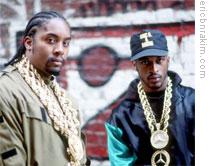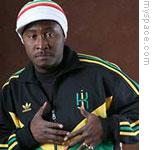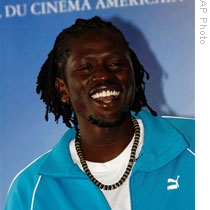2009-10-13
VOICE ONE:
I'm Barbara Klein.
VOICE TWO:
And I'm Steve Ember with EXPLORATIONS in VOA Special English. Today we tell about hip-hop music with a message.
(MUSIC)
VOICE ONE:
Hip-hop music started in the South Bronx area of New York City in the early nineteen seventies among young African Americans and Latino Americans. People would gather in the streets singing and dancing to hip-hop. It was a place for people to sing about social injustices as well as what was happening on the streets. Some of the world's greatest hip-hop singers started this way. Now, hip-hop is popular worldwide. It is often used to express social and political issues. Some people call these musicians socially conscious hip-hop artists.
VOICE TWO:
 |
| Dancer perform at a hip-hop competition in El Alto, Bolivia |
VOICE ONE:
Hip-hop beats were made when a DJ used two records to create a special measured sound. Sometimes the DJ would move one record while holding the other one down. Other times he would move both records at the same time producing a quick measured beat. This is called scratching. DJs do this using a turntable. Today the turntable may be replaced by music that is produced on computers. Here is part of the song "Beat Street" by the famous scratcher and DJ Grand Master Flash.
(MUSIC)
VOICE TWO:
The Sugarhill Gang was one of the first groups to perform hip-hop. In the late nineteen seventies, music producer Sylvia Robinson realized that hip-hop was becoming a popular part of street celebrations. She decided to find three MCs in her neighborhood in Englewood, New Jersey, and have them sing together. The men called themselves Wonder Mike, Big Bank Hank, and Master Gee. They went on to sing one of America's favorite songs of nineteen seventy-nine, "Rapper's Delight."
"Rapper's Delight" was not one of hip-hop's first songs. But it made hip-hop popular in the United States and around the world.
(MUSIC)
VOICE ONE:
 |
| Eric B & Rakim |
(MUSIC)
VOICE TWO:
 |
| Immortal Technique |
(MUSIC)
VOICE ONE:
 |
| Didier Awadi |
In two thousand seven he produced an album that mixes the speeches of African leaders with African MCs. The album is called "African Presidents." The album aims to bring young MCs from Africa together to explore their history and unite for a better future. Awadi also has an album called "Another World is Possible." In the song "J'accuse," he accuses all the powers and forces that have interfered with the development of Africa.
(MUSIC)
VOICE TWO:
 |
| Emmanuel Jal |
To help him recover from what he experienced as a child, Emmanuel Jal began singing. When he was in school in Kenya, he fell in love with hip-hop.
He believed the music was an easy and effective way to spread his message. His first CD was "Gua," which means "peace" in the Nuer language of Sudan. The CD made him famous. His second album, "War Child," is about his experiences as a child soldier in Sudan, how he changed and how he wants to make a difference. Emmanuel Jal started an aid organization called Gua Africa. He performs around the world to raise money for the organization. Here is part of the song "War Child."
(MUSIC)
VOICE ONE:
Hip-hop has no borders. In the Philippines, people started listening to it in the early nineteen eighties. One hip-hop artist, Francis Durango Magalona, also known as FrancisM, made this music even more popular in the Philippines. Many of the songs in his first two albums were about political and cultural problems during the nineteen nineties. For example, in his second CD, "Rap Is FrancisM," the song "Halalan" is about political insecurity in the Philippines. Other songs were about the illegal drug problem.
FrancisM became known as the leading socially conscious artist in the Philippines. But in March of two thousand nine he died from the disease leukemia. Other artists around the world are spreading their own messages through hip-hop music.
(MUSIC)
VOICE TWO:
This program was written by Kim Varzi and produced by Mario Ritter. I'm Steve Ember.
VOICE ONE:
And I'm Barbara Klein. Join us again next week for EXPLORATIONS in VOA Special English.